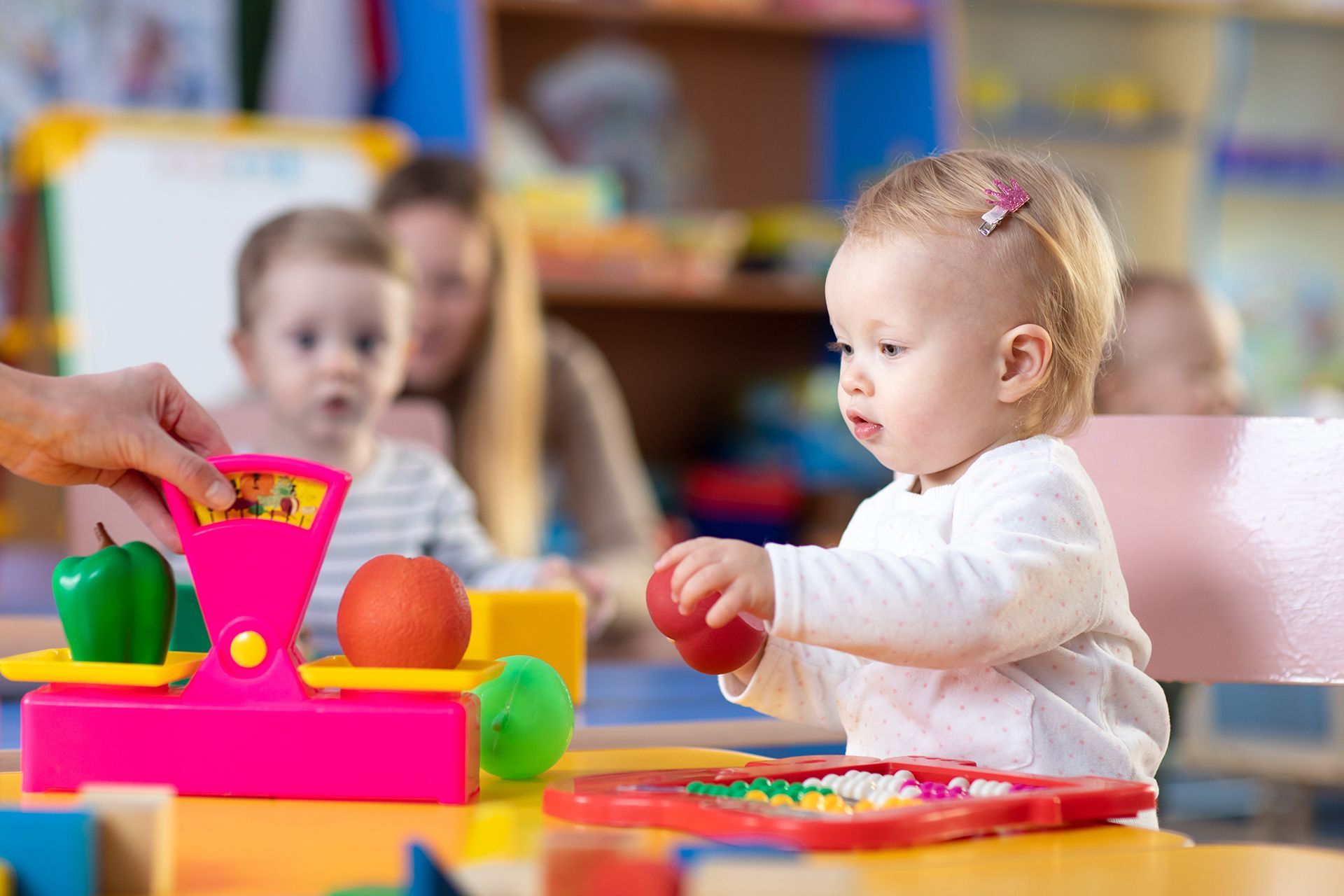Programs
Infant & Toddler Program
Sunshine Montessori School of Chino Hills is proud to announce the opening of its Infant & Toddler Program. The program accepts children ages 6 weeks to 23 months. A specially prepared loving environment is set up to accommodate the needs of our newest clientele.
Infants and toddlers enjoy our beautifully decorated and newly painted facility, which promotes a loving and nurturing environment. Our program is staffed by highly qualified caregivers that will give your child the love and affection he or she is used to receiving at home. For inquiries, please call (909) 597-1800.
Space Is LIMITED!
Primary Program - 2½ to 6 Years
Maria Montessori spent many decades working with the young child, and based on her observations of their needs, identified the following characteristics of children younger than six:
The Absorbent Mind
The Montessori Method is based on the young child's unique aptitude for learning, which Dr. Montessori identified as the “absorbent mind”. In her writings she frequently compared the young mind to a sponge. It literally absorbs information from the environment. The process is particularly evident in the way in which a two-year-old learns his native language, without formal instruction and without the conscious, tedious effort, which an adult must make to master a foreign tongue. Acquiring information in this way is a natural and delightful activity for the young child who employs all his senses to investigate his interesting surroundings.
Sensitive Periods
The effortless ability to acquire certain skills and abilities called “sensitive periods” by Dr. Montessori. They correspond with the child's development. Most of the observed sensitive periods are involved with the child's senses- his learning tools. His interest is spontaneous. From birth, he is interested in his surroundings and gradually makes order from them. This spontaneous interest and inclination toward order is the basis of the Montessori apparatus. Based on these characteristics, Dr. Montessori developed an environment that allows the child to develop to his or her fullest potential. Some aspects of the Montessori Primary environment are:
Practical Life Exercises
The young child is attracted to activities that give him independence and control of his own life. Special Montessori materials enable him to tie, button, snap and use many other fastening devices. The purpose of these exercises is to develop concentration and attention to detail as he follows a regular sequence of actions, finishing each task and putting away all materials before going on to another activity.
Another important need of the young child is to develop his muscles and coordinate his movement through such practical life exercises as sweeping, polishing, carrying and pouring water, and washing a table. These activities provide the very foundation on which the child approaches more intricate academic exercises.
Sensorial Exercises
Sensorial materials in the Montessori classroom are designed to sharpen the senses of the young child and enable him to understand the may impressions he receives through them. Each of the sensorial materials isolates one defining quality such as color, shape, weight, texture, size, sound, or smell. Sound boxes, for example, are all the same size, shape, color, and texture; they differ only in the sounds, which are made when a child shakes them. Other sensorial materials include geometric solids, smelling jars, color tablets, temperature bottles, sandpaper letters, baric tablets, cylinder blocks, etc. The Montessori sensorial materials help the child to distinguish, to categorize and to relate new information to what he already knows. The child finds a sense of order in these materials and acquires the joy of learning that his environment has order. His intellect is trained to make order out of a multitude of experiences, which is the learning process.
Mathematics
The materials for mathematics introduce the concept of quantity and the symbols for the numbers 1 through 10. The quantity is introduced by a series of rods, which the child can count and compare. He matches sets of symbols cards with the rods. Using a variety of beads and symbol cards, the child becomes familiar with the numbers as a decimal system including concrete experiences with the operation of addition, subtraction, multiplication and division. These exercises not only teach the child to calculate, but they provide a deep understanding of how numbers function. He learns concrete mathematical concepts and the materials lead him to the abstract, so that his understanding has substance. Because of the concrete nature of the materials, the child is able to work with basic concepts of fractions, geometry and algebra.
Language
According to Dr. Montessori, the evolution of language begins with the infant's unique capacity to absorb fragments of language, which serve as a basis for his development. The child first discovers that sounds have meaning, and then he isolates the parts of speech. Finally, he grasps the use of sentences. The constant assimilation of language results in a sudden expansion of the vocabulary. The child learns language naturally- he automatically takes it from his environment. The work of the parent and the teacher are to expose him to the equivalent forms of written language, which he learns through the same general pattern of development. The Montessori child begins reading when he is ready and proceeds at his own pace. His experiences in practical life and sensorial education serve as a preparation for this. The sandpaper letters provide a phonetic basis for reading. The child's desire and sensitivity to touch are utilized by these letters that are cut out of sandpaper and mounted for tracing. He not only hears the sound and sees the shape, but trains the muscles for when he begins writing. With cut-out letters, the child builds his own words on a mat. The material frees him from the fatigue of his still developing writing skills, and yet gives him the opportunity to pursue his interest in words. The child builds up his store of words through storytelling, conversation, and many other exercises. These activities serve as preparation for the time when the child assimilates what he knows and explodes into writing.
Other Academic Areas
Montessori introduces grammar, geography, geology, biology, history, etc. to children between the ages of three and six. The reason is that at this age children can joyfully absorb many difficult concepts if they meet them in concrete form. The common stumbling blocks in the middle elementary grades can be exciting if they are presented to youngsters at an earlier age when they enjoy manipulating with their hands. In a Montessori classroom a unit or fraction is not simply a number on a paper; it is something, which a child can hold in his hand. A verb is not just a word on a paper; it is something, which he can cut out. In similar fashion he can pour water around an island or form a square with five rows of five beads each. The materials that make these concepts tangible for him will serve as touchstones in his memory for many years, to clarify the abstract terms when he meets them again and again in future learning situations.
After School Program - 5 to 12 Years
Sunshine Montessori School of Chino Hills offers an After-School Program. The program accepts children ages 5 years to 12 years. Transportation to and from your child's local school is provided. Children enjoy our beautifully decorated and newly painted facility, which includes separate playgrounds for different age groups.
It is staffed by highly qualified teachers who help with homework and introduce children to computers.
For inquiries, please call (909) 597-1800.

